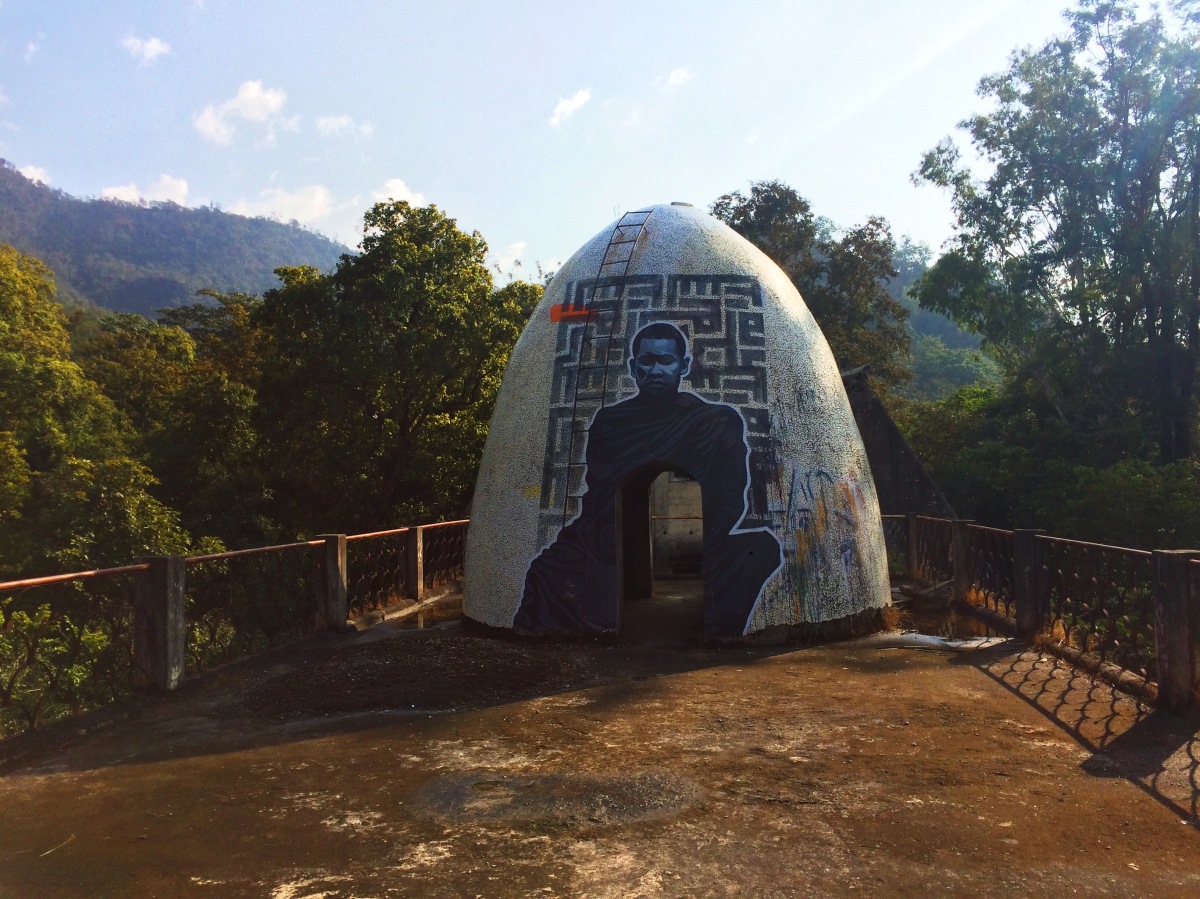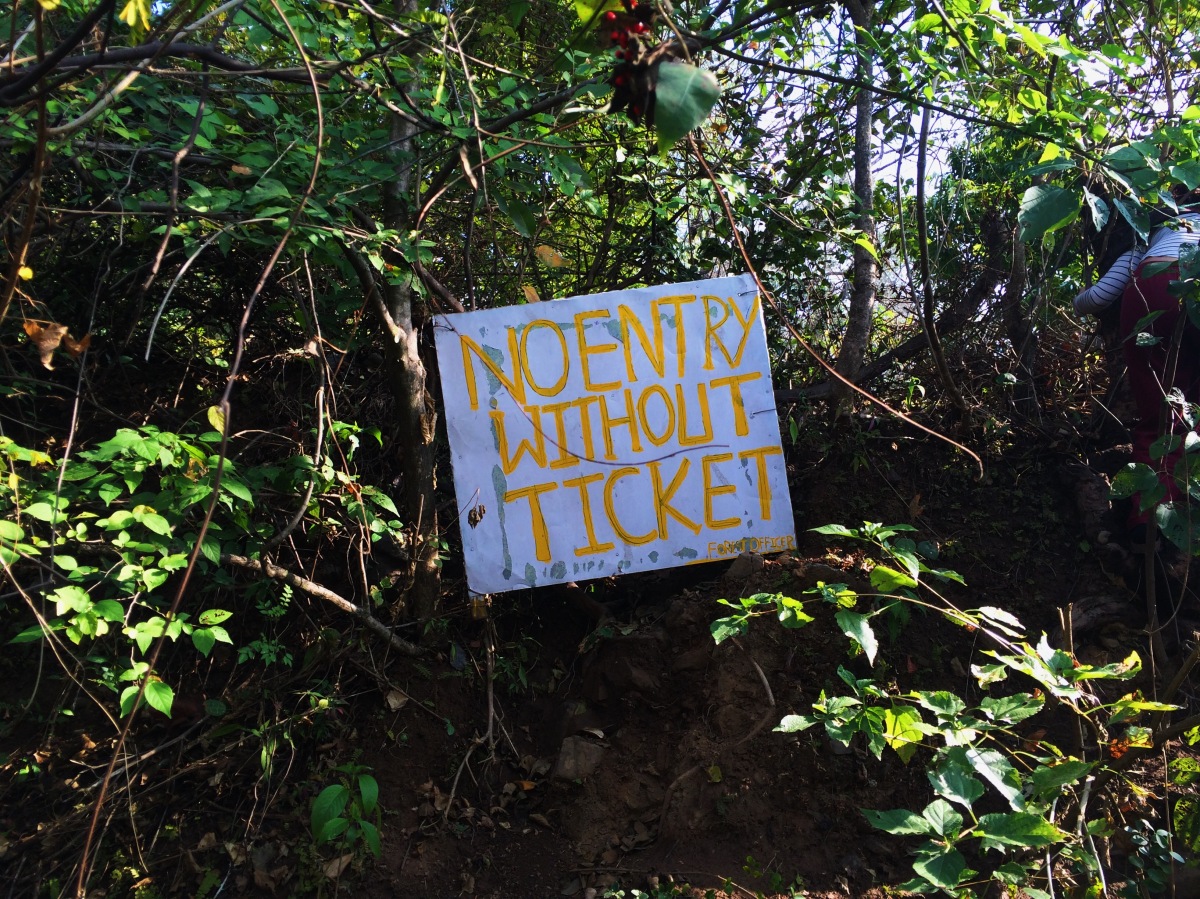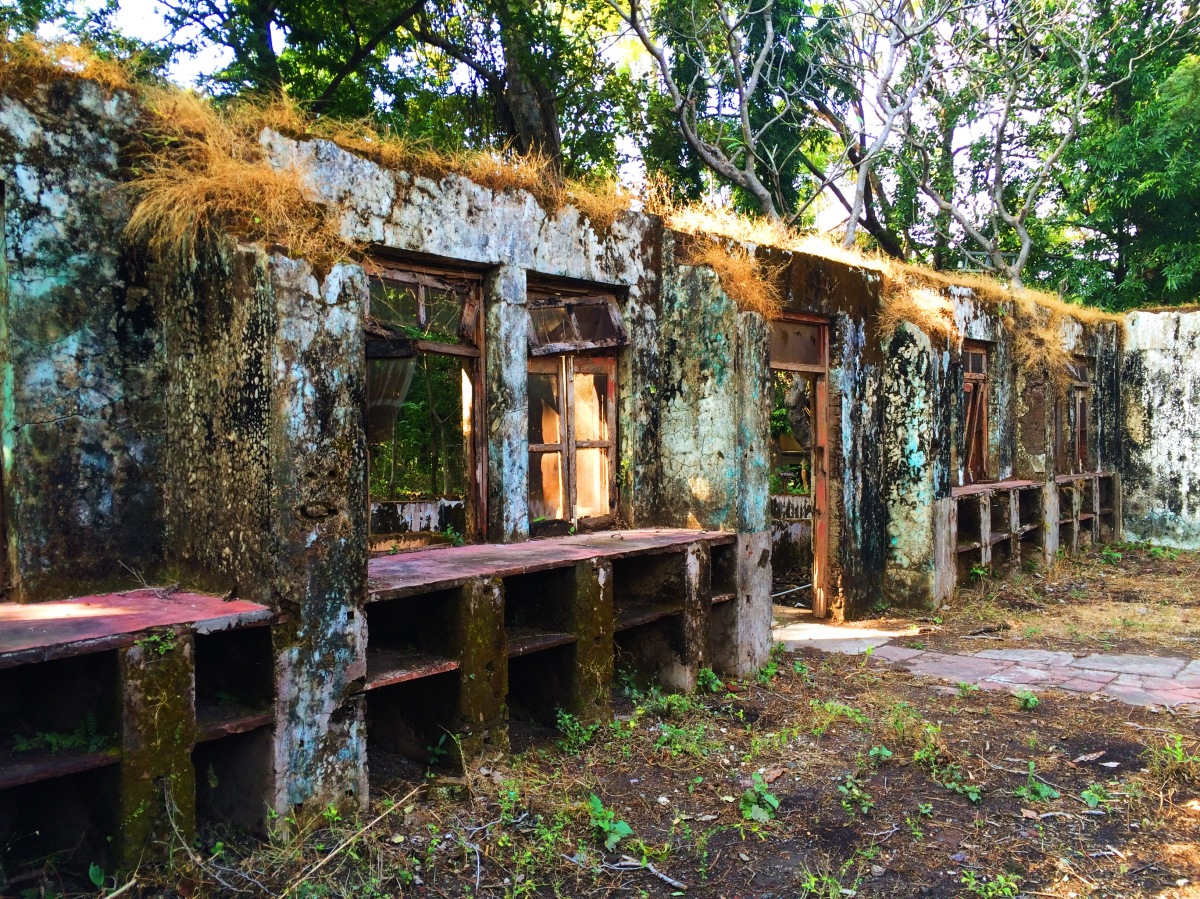By Connor Newson
As we heave ourselves over the barbed wire of a concrete wall the air falls silent. Around us stand maybe ten small, dome-shaped buildings scattered as if at random. Exposed to the elements, partially swallowed by overgrown brush, and rigged with untamed vines that spill from the crevices, it is a wonder how these stone huts retain a certain freshness after decades of negligence. We creep forward slowly, consciously peering around corners before making a second move for fear of being caught. After all, we weren’t supposed to be here – the sign reading “NO ENTRY WITHOUT TICKET” as we climbed the steep Ganga riverbank a few moments ago made that quite obvious.
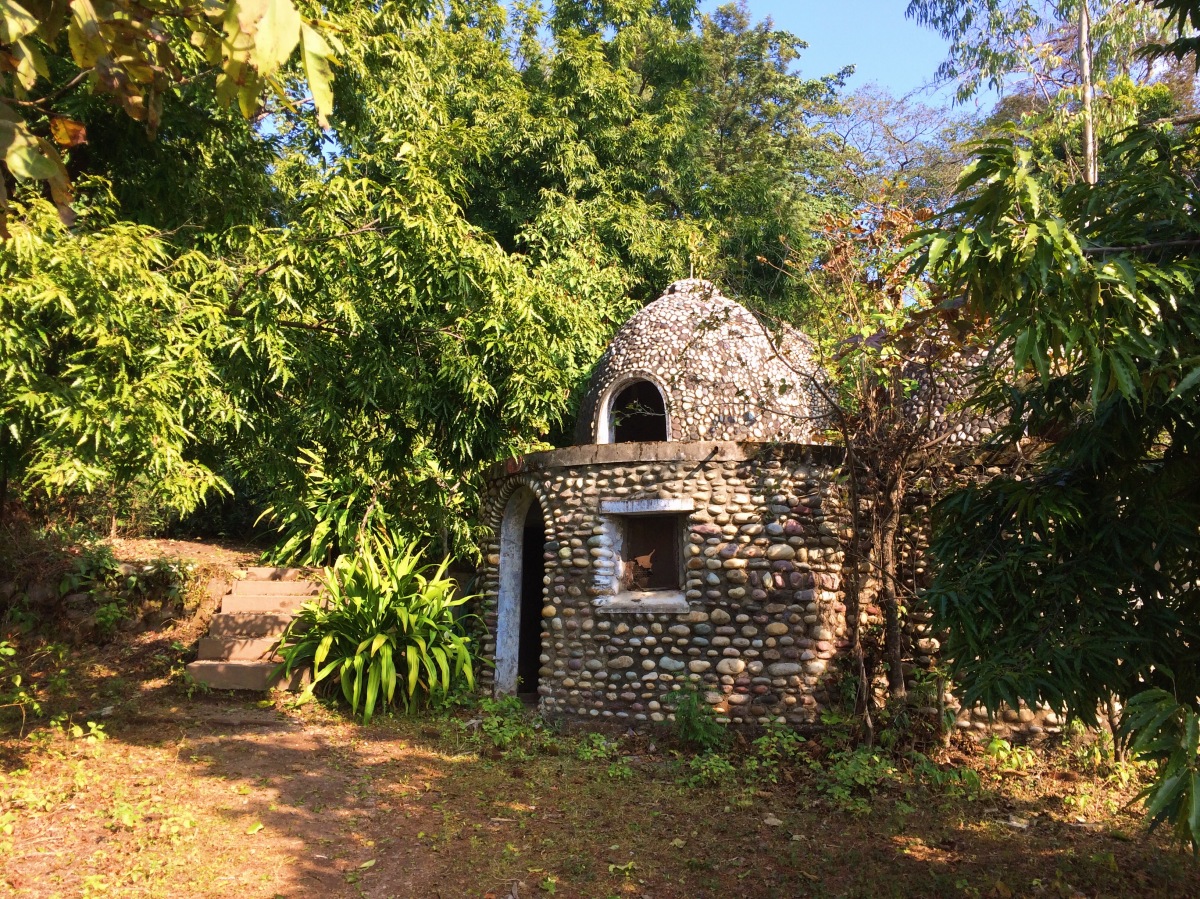
For now at least, we are alone. So we enter a dome, practically crawling through the small doorway to reveal the decaying interior. Its paint-peeled concrete walls are bare with nothing but individual questionable concrete slabs protruding from the arching wall which act as stairs to the hole above our heads. Somehow the rustic orange and mould-green colours give a pleasurable aesthetic to this forgotten space. However, considering the condition of the entire inside, my apprehension for ascending into the floor above is justified. Nevertheless, my overactive curiosity begs for more as I find myself climbing the freestanding steps one after the other.
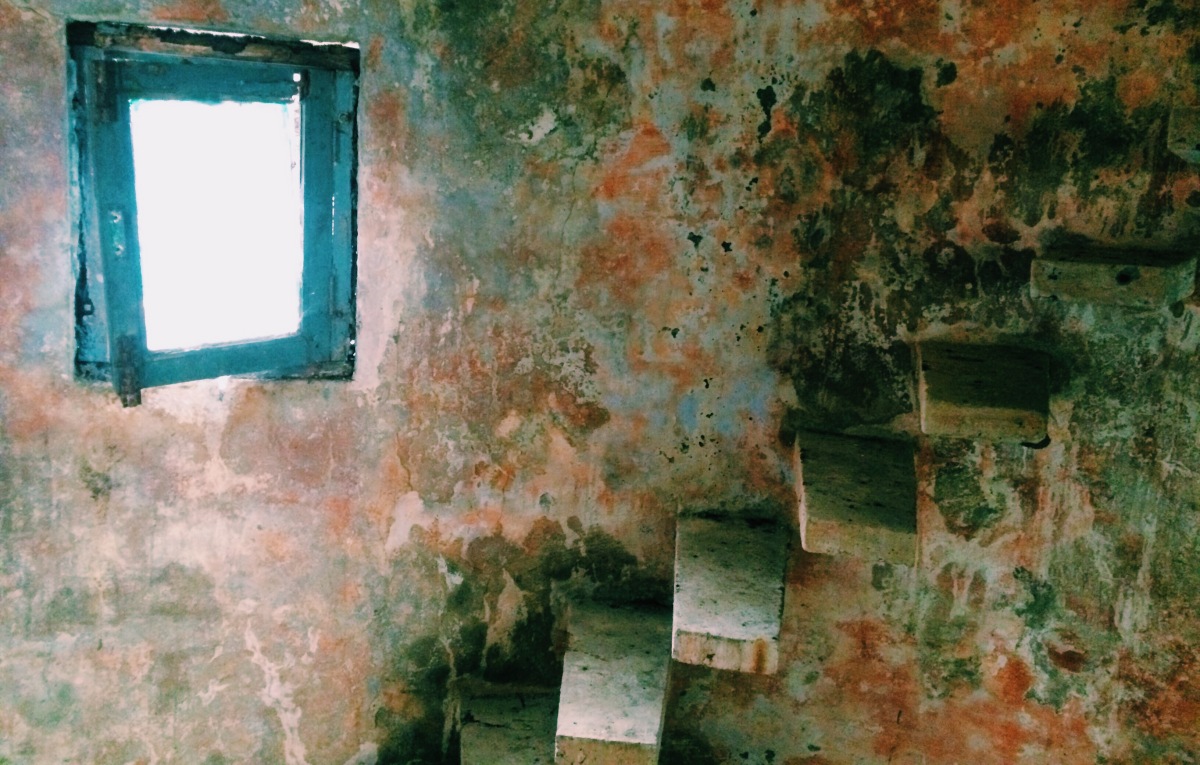
From upstairs, daylight floods into the room from yet an even smaller window. A path can be seen outside winding around the tree-covered domes, heading uphill towards larger buildings. Even from a distance it seems that years of untouched tranquillity hasn’t been as kind to those it has to the quaint little structure I stand on now. We push on, following the path uphill until we hear twigs snaps, and then some whispering voices down the hill to our right.
Through the tangling trees we spot two friends glancing forwards and behind whilst helping each other over different wall. It seems we’re not the only ones here anymore. Their wariness of being detected reflects that of ours only minutes ago. But for now, with no one else around, our paranoia has somewhat settled as we move up the hill. That is until we find ourselves walking on a dirt path close to the paying visitors entrance – the one we managed to avert before entering through an alternative route.
Rumour has it that this relatively new entrance fee came into effect after people realised money could be made from the street art hidden somewhere within. The fact that the Beatles came to study transcendental meditation here in 1968 is also a huge attraction. But by principal of street art being art for the people, subversion seems rather justified. Besides, this place has had open access for almost forty years now.
Conscious of preserving our cover we speed up out of view, passing a large roofless bungalow with rickety wooden window frames and sprouting bone-dry grass. Years of mould and moss adds to the post-apocalyptic ambience, yet the sunlight bursting through untamed trees gives the derelict site an element of peace. Further along I see the first signs of modern interference: a signpost. “PAINTING IS PROHIBITED”.
For a fleeting moment my reason for trespassing and not paying seems compromised. Surely this sign suggests the rumours aren’t true, that they’re not trying to capitalise from street art. If they were they definitely wouldn’t use signs to condemn “painting”, right? A couple of steps further and an elaborate painting of a bearded Indian man comes into view, spread across the wall almost directly behind the sign… My moral high ground is restored. Instead of condemning painting – as the sign suggests – an effort is made to preserve this commodity by marginalising other art that might prove tarnishing.
In my periphery I spot another painting on the adjacent wall, probably by the same artist. This time of a faceless, cloaked figure with clasped hands. I begin to approach it when one more appears from behind the tattered window frame of an old house. Soon enough, everywhere I look more paintings reveal themselves. Tucked behind the walls of crumbling buildings and peering through broken windows, it becomes a treasure trail for art lovers and urban explorers. We follow them like breadcrumbs, admiring the transcendent, spiritual nature of each piece until four people sitting outside a large warehouse catch our attention.
We stop for a moment, aware that they, like ourselves, have probably chosen an alternative entrance into the complex. Turning now to the building I see a doorway. The inside is caked with paintings and writing, with a single stencilled piece on the floor that reads: “FIND YOUR OWN WAY”, and an arrow pointing inside.
We unwittingly step into decades of artistic and musical history. Undoubtedly an appropriate place to jam, the large interior is the mother of all shrines to the Beatles. With stencils, lyrics, and huge monochromatic paintings of the famous group and their teachers decorating the walls, it proves to be a gallery of expressive amateur creativity. No doubt people have been breaking into this compound for years and using it as a concrete canvas to satisfy their creative desires. I walk to the door where a tag stands out from the surroundings. It reads, “Please Respect the ART & don’t tag the pointless things. Thanks & Enjoy”.
Once again my conscience can rest knowing that these artists didn’t have the intention of creating a moneymaking gallery for others, rather they advocate painting and enjoyment from sharing their art.
